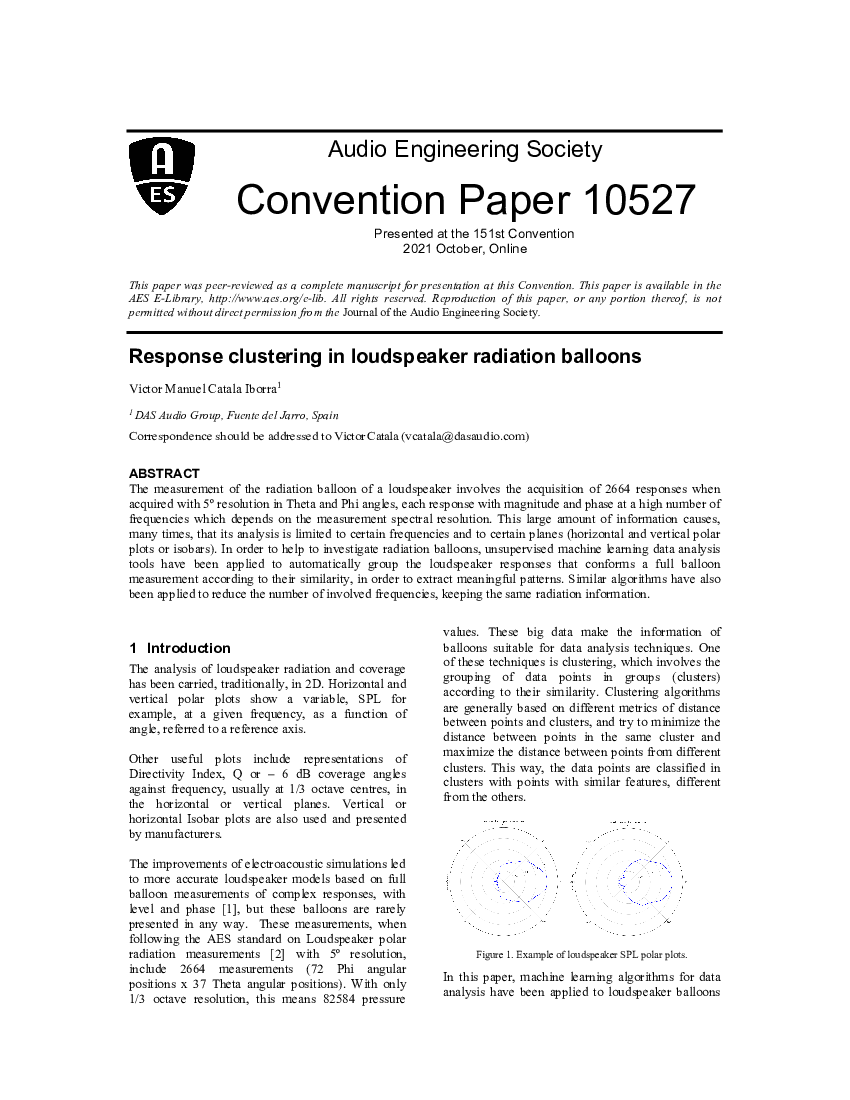Home / Publications / E-library page
You are currently logged in as an
Institutional Subscriber.
If you would like to logout,
please click on the button below.
Home / Publications / E-library page
Only AES members and Institutional Journal Subscribers can download
The measurement of the radiation balloon of a loudspeaker involves the acquisition of 2664 responses when acquired with 5º resolution in Theta and Phi angles, each response with magnitude and phase at a high number of frequencies which depends on the measurement spectral resolution. This large amount of information causes, many times, that its analysis is limited to certain frequencies and to certain planes (horizontal and vertical polar plots or isobars). In order to help to investigate radiation balloons, unsupervised machine learning data analysis tools have been applied to automatically group the loudspeaker responses that conforms a full balloon measurement according to their similarity, in order to extract meaningful patterns. Similar algorithms have also been applied to reduce the number of involved frequencies, keeping the same radiation information.
Author (s): Catala Iborra, Victor Manuel
Affiliation:
DAS Audio Group, Fuente del Jarro, Spain
(See document for exact affiliation information.)
AES Convention: 151
Paper Number:10527
Publication Date:
2021-10-06
Import into BibTeX
Session subject:
Transducers
Permalink: https://aes2.org/publications/elibrary-page/?id=21491
(3480KB)
Click to purchase paper as a non-member or login as an AES member. If your company or school subscribes to the E-Library then switch to the institutional version. If you are not an AES member Join the AES. If you need to check your member status, login to the Member Portal.

Catala Iborra, Victor Manuel; 2021; Response clustering in loudspeaker radiation balloons [PDF]; DAS Audio Group, Fuente del Jarro, Spain; Paper 10527; Available from: https://aes2.org/publications/elibrary-page/?id=21491
Catala Iborra, Victor Manuel; Response clustering in loudspeaker radiation balloons [PDF]; DAS Audio Group, Fuente del Jarro, Spain; Paper 10527; 2021 Available: https://aes2.org/publications/elibrary-page/?id=21491